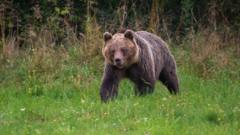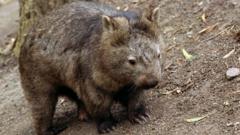In a controversial move following a bear-related fatality, Slovakia has approved the culling of 350 bears, extending a state of emergency that affects most of the country. While proponents argue it's necessary for public safety, critics emphasize the potential legal and ecological ramifications.
Slovakia Initiates Bear Cull Following Fatal Attack, Sparking Controversy

Slovakia Initiates Bear Cull Following Fatal Attack, Sparking Controversy
The Slovak government has approved a plan to cull 350 bears in response to a fatal bear attack, raising concerns among conservationists about wildlife management and legal responsibilities.
The Slovak cabinet recently endorsed a controversial plan to cull approximately 350 brown bears, constituting about a quarter of the country's estimated bear population of 1,300, in response to escalating bear attacks that culminated in a man’s tragic death in Central Slovakia. Prime Minister Robert Fico’s government emphasized safety, declaring, "We can't live in a country where people are afraid to go into the woods," amidst increasing public concern regarding bear encounters.
The emergency measures, which now cover 55 of Slovakia's 79 districts, signify a significant escalation in the government's approach to wildlife safety, following a series of bear-related incidents. The recent death of a 59-year-old man, found with severe injuries consistent with a bear attack, has intensified the debate. With this measure, the Slovak authorities are explicitly challenging existing international wildlife protections, which has drawn sharp criticism from conservationists.
Michal Wiezek, an ecologist and Member of the European Parliament for the opposition party Progressive Slovakia, staunchly condemned the government's decision, arguing that it represents a failure to effectively manage human-bear interactions. "The Environment Ministry has failed desperately to limit the number of bear attacks, and the government has decided to cull even more bears to cover up their failure," Wiezek asserted. He called for the European Commission to intervene, highlighting that many bear encounters do not result in attacks.
Amid ongoing debates surrounding public safety and wildlife conservation, a representative from the Environment Ministry indicated that a bear population of approximately 800 would be acceptable, challenging the current estimates of a stable population around 1,270. The rise in bear encounters and attacks, including other notable incidents over the past year, has made this issue politically sensitive.
The Slovakian bear population is primarily situated within the Carpathian mountain range, a vital ecosystem spanning several Central and Eastern European countries where human-wildlife conflict is increasingly common. As international observers monitor Slovakia's controversial decision, the discourse emphasizes the complex balance between ensuring public safety and protecting wildlife under legal frameworks.






















